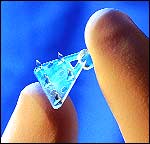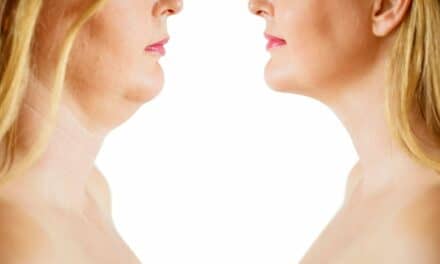Rhinoplasty may make a woman appear three years younger, machine learning shows.
By Tonya Johnson
In a selfie-driven era of social media, people are examining their facial features much more critically. As a result, more people are seeking surgical solutions. According to a study led by researchers at the University of California Los Angeles (UCLA), rhinoplasty, or cosmetic nose surgery, may make a woman look up to three years younger.
Rhinoplasty involves making structural changes to the bone and cartilage through small incisions inside the nose and when necessary around the nostril, all while a patient is under general anesthesia. Like other features of the body, the human nose, which is made up of soft tissue, cartilage, and bone, also ages and becomes more prominent with the loss of facial fat and volume in the cheeks.
“Rhinoplasty is widely recognized as a facial beautification procedure, but it isn’t commonly known for its anti-aging effects,” says Robert Dorfman, MD, lead author of the study and a resident physician in the division of plastic and reconstructive surgery at the David Geffen School of Medicine at UCLA. The study was published in the Aesthetic Surgery Journal. Until now, Dorfman says, there has been little to no objective scientific evidence for the rejuvenating effect of rhinoplasty.
The researchers used artificial intelligence, known as machine learning, to study before-and-after photos of 100 female patients, ages 16 to 72, all of whom underwent rhinoplasty for cosmetic reasons by the UCLA surgeon and senior author of the study, Jason Roostaeian, MD. At 12 or more weeks later, standardized photographs were analyzed with the technology, which estimates a person’s age by cropping the face from a photograph and then extracting a prediction through an algorithm.
This 36-year-old female patient was included in the UCLA-led study. (Left) Preoperatively, the ranking Convolutional Neural Network software detects the patient to be 32 years old. (Right) Six months postoperatively, this same patient is detected as 26 years old.
“We have a photo suite at our clinic here at UCLA, so we take pre and post photos of our patients the same way each time,” says Roostaeian, who is also associate clinical professor in the division of plastic and reconstructive surgery at the Geffen School. “It gives you a much better comparison and that is a really important point to make about this scientific study. All of the photos had the same lighting and angle, because those factors play into how a photo is perceived by the facial recognition software system that analyzes those patterns—like a signature or a fingerprint. It’s amazing how accurate the machine is!”
The rhinoplasty procedures in this study were customized for each patient to fit the person’s face best. The results were even more dramatic in women over 40, some of whom were estimated to look seven years younger after rhinoplasty. However, because the sample size of the 40-plus group was small (25 women), the researchers say further studies need to be done to validate the results. (The median age of the study participants was 32.)
“Most of the rhinoplasty surgery that I do is not typically for anti-aging purposes. A lot of patients have it done in their 20s, 30s, or even during their teenage years, for a multitude of reasons of wanting to look better, breathe better, or both,” explains Roostaeian. “What was interesting about the study was the significance of it that was most appreciated by the older patients, which is a nice reassurance that, as a plastic surgeon, you’re heading in the right direction—meeting the needs of your patients—making them look younger.”
Tonya Johnson is associate editor of Plastic Surgery Practice







